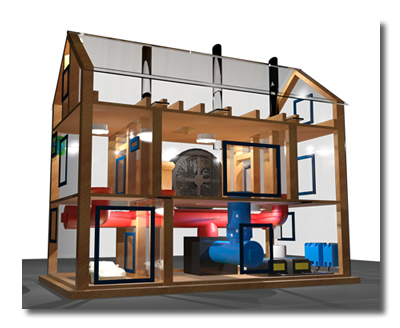Health and Safety
In order to suggest that weatherization work be done on your home there are safety measures that need to be met during our testing. These safety measures are identified using a variety of testing methods. Recommendations that are made as a result of this testing take absolute priority over energy efficiency measures or modifications.
At Shaping Energies, we use a variety of diagnostic technical tools to evaluate whether or not your home has health and safety issues on your home energy audit. These tools include, but are not limited to, the following:

- Combustible gas sniffer
- Combustion analyzer
- Moisture meter
- Hygrometer
- Pressure pan
- Monometer
- Exhaust flow meter
- Human eyes
Home Energy Audits: Health & Safety
-
Not enough natural ventilation:
- This leads to poor air quality
- Increased humidity
- bad smells
-
Too much moisture in the air:
- This leads to condensation
- Mold
- Rotting structural members
- Corrosion at combustion appliances
-
Combustion gases not combusting properly:
- This leads to carbon monoxide
- Conditions that are not optimum for combustion appliances that damage the systems over time
-
Combustion gases escaping from the chimney:
- This causes deadly gases to enter into your home
- Unnecessary moisture entering into the home
-
Dirt floor in the basement or crawlspace:
- Major source of unnecessary moisture in the home
- Leads to increased levels of moisture in framing members that eventually causes rot
-
Presence of vermiculite or asbestos:
- Vermiculite may contain asbestos and can cause illness; it requires professional remediation
- Asbestos pipe insulation and siding require professional remediation
-
Lead paint:
- Likely exists on homes that were built before 1978
- Is proven to cause illness when consumed by humans
- Must be professionally remediated when large enough painted surface is disturbed

